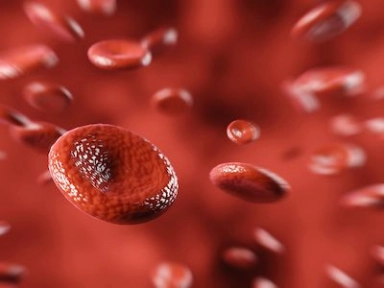Risk for thromboembolic and bleeding events in patients with haematological cancers
.jpg/jcr:content/impact-of-anemia%20(3).jpg)
Findings from a Danish population-based cohort study.
Key Takeaway
- Patients with haematological cancers are at higher risk for thromboembolic events(myocardial infarction [MI], ischaemic stroke, venous thromboembolism [VTE]) and bleeding requiring hospital contact compared with the general population.
- Among patients with haematological cancer, about 20% experienced cardiovascular diseases or bleeding within 10 years after diagnosis.
Why This Matters
- Pathophysiological changes in the haemostatic system and the presence of other risk factors such as advancing age and abnormal renal function increase the risk for bleeding in patients with haematological cancers.
- Prior research on the association between haematological cancers and cardiovascular diseases did not include data on bleeding risk and was more focused on venous or arterial thromboembolic events.
- Therefore, the association of haematological cancers with thromboembolic and bleeding outcomes may guide the choice of anti-neoplastic and anticoagulant and antiplatelet treatment.
Study Design
- This Danish population-based cohort study (2000-2013) evaluated 32,141 patients (age, ≥15 years) diagnosed with incident haematological cancers identified from the Danish Cancer Registry (DCR).
- General population (n=160,252) for comparison cohort was selected from the Civil Registration System (CRS), the Danish National Patient Registry (DNPR) and the DCR.
- 10-year absolute risks for thromboembolic events and bleeding were calculated, and HRs were computed.
- Funding: Aarhus University Research Foundation, Program for Clinical Research Infrastructure (PROCRIN) established by the Lundbeck Foundation and the Novo Nordisk Foundation.
Key Results
- In patients with haematological cancers, the overall 10-year absolute risk for any thromboembolic or bleeding complication after haematological cancer was 20.5%: 3.3% for MI, 3.5% for ischaemic stroke, 5.2% for VTE and 8.5% for bleeding.
- Compared with the general population, patients in haematological cancer cohort were at higher risk for thromboembolic events and bleeding requiring hospital contact:
- MI: HR, 1.36; 95% CI, 1.25-1.49;
- Ischaemic stroke: HR, 1.22; 95% CI, 1.12-1.33;
- VTE: HR, 3.37; 95% CI, 3.13-3.64 and
- Bleeding: HR, 2.39; 95% CI, 2.26-2.53.
- In patients with cancers other than myeloid leukaemia, acute lymphoid leukaemia and myelodysplastic syndrome, 10-year risk for thromboembolic events surpassed that of bleeding.
- In chemotherapy and radiotherapy subgroups, the observed associations were present in patients with and without treatments.
- In subgroup analysis, patients receiving chemotherapy reported high risk for VTE compared with those who did not receive chemotherapy (HR, 4.32; 95% CI, 3.87-4.81).
Limitations
- Underregistration of cancer therapies.
- Lack of data on in-hospital treatment with antithrombotic and anticoagulant treatment.
- Possible underestimation of study outcomes due to exclusion of secondary diagnoses.
Reference
- Adelborg K, Corraini P, Darvalics B, Frederiksen H, Ording A, Horváth-Puhó E, Rørth M, Sørensen HT. Risk of thromboembolic and bleeding outcomes following haematological cancers: a Danish population-based cohort study. J Thromb Haemost. 2019 May 4 [Epub ahead of print]. doi: 10.1111/jth.14475. PMID: 31054195
Related articles
MAT-BH-2200048/v1/Jan 2022


